Tea is an important commercial crop that belongs to the genus Camellia and the family Camelliaceae. Tea (Camellia sinensis) crop cultivated in many subtropical and subtropical regions of the world. Tea needs essential fertilizers like N, P, K, S, Ca, Mg, Zn, Mn, B, and Cl like any other crop. Tea trees are very hardy plants capable of withstanding flooding, poor soil, drought, and fire, but to get maximum yields requires good soil, abundant irrigation/rainfall, good nutrition, and excellent management skills.
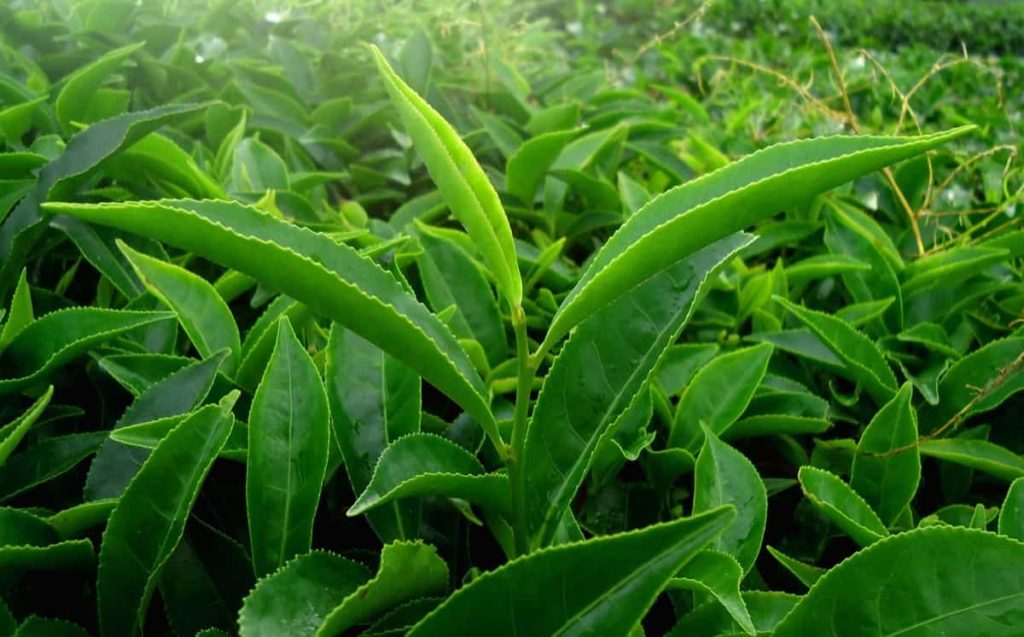
Nutrient management is essential for Tea plantations, and nutrients are mainly supplied through chemical fertilizers. Therefore, fertilizer application is a necessary process in Tea plantations. The dosage of fertilizer application depends on many factors like the productivity of the part, the type of prune, the fertility status of the soil, etc. Therefore, you should have a proper fertilizer program for effective management and get fertilizers accordingly. The other thing in time is that it is also important to apply fertilizer at the right time while adopting the appropriate method. Let’s find out the best fertilizer for Tea plants below.
Best fertilizer for Tea plants
Organic fertilizers
Bone meal, fish meal, and other organic manures may also be available in a non-contaminated environment. Wood ash can also be applied.
Time of fertilizer application
- Fertilizer should be applied before the onset of monsoon. Fertilizers must be broadcast around the drip circle and avoid contact with the collar.
- Apply fertilizer on moist soil after the first rains of spring during March-April.
- Soil should be moist to a depth of 45 cm.
- Apply fertilizer on clean ground free from weeds.
- In unpruned sections, apply fertilizers after the bushes have made some growth.
- In prune Tea or skiffed Tea, fertilize after a few leaves of the bushes have come out.
- Remember that do not apply fertilizer on rainy days.
Nutritional analysis
Regular soil and leaf analysis are necessary to evaluate the results of fertilizer methods and plant nutrient removal. Farmers can create a helpful record of crop response to fertilizer by monitoring leaf and soil nutrient levels with past fertilizer use, oil, and biomass production over several seasons. Where there is no standard maximum leaf level, comparing nutrient levels with a healthy and unhealthy plant will help diagnose a nutritional problem.
In case you miss this: Tea Seed Germination, Conditions, Time, Process
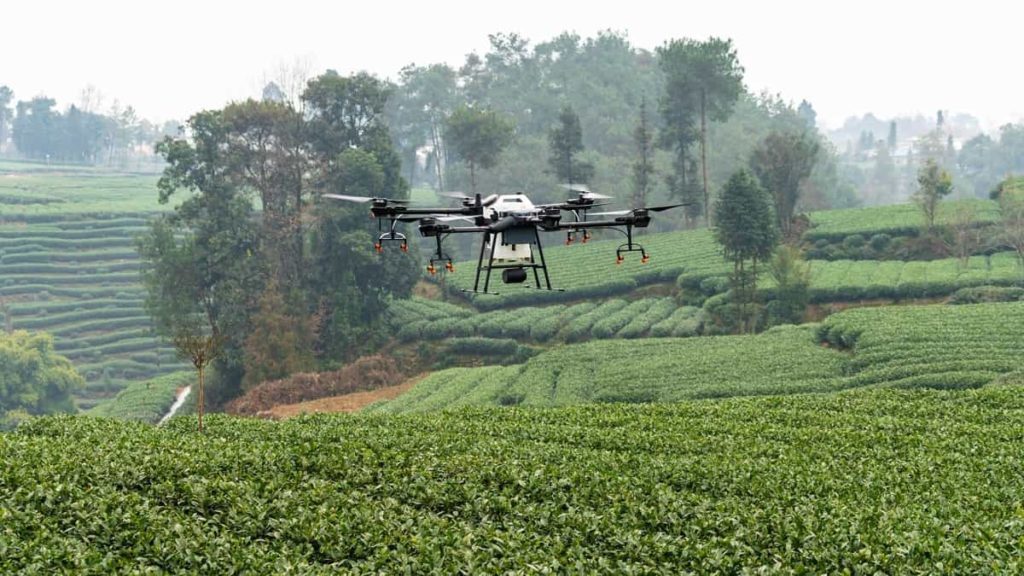
Soil fertility and nutrient availability are the essential component of the environment that determines the productivity of plants. In the agro-ecosystem, fertilizers are necessary to maintain yields due to the constant release of nutrients from the soil through harvesting. The use of fertilizer in Tea production is a typical administrative process. To meet the growing demand for Tea, the area per crop production unit has to be increased.
Artificial fertilizers containing nitrogen, phosphorus, and potassium have increased the production of agricultural products. So, strategies to improve agricultural production in developing countries should consider nitrogen and phosphorus supplementation through microbial processes. It can be achieved through the use of organic fertilizers. Nutrition analysis can help:
- Diagnose deficiencies/toxicity
- Develop a fertilizer program
- Measure the removal of nutrients
- Survey the nutritional status of crops
- Compare nutritional status between regions
It is challenging to see nutrient deficiencies in a Tea tree because the leaves are small.
NPK
The average dose of fertilizer for Tea
- Nitrogen = 10 kg nitrogen for every 100 kg crop
- P2O5 = 30 to 40 kg
- K2O = 40 to 50% Nitrogen content depends on soil type and climatic conditions.
Liquid fertilizer
The Tea plant can benefit significantly from regular fertilizer use. Feed the bush with a balanced 10-10-10 fertilizer every other month during the growing season—Mix 1/3 ounce of liquid fertilizer well with 1 gallon of water for every 10 square feet. Use a broadcast sprayer to apply the fertilizer evenly to the soil. When you spray, move the material back and forth and keep it mixed. Avoid contact with your skin, and then protect yourself by wearing long sleeves, pants, and rubber gloves.
In case you miss this: Tea Powder Making Process From Green Tea Leaves
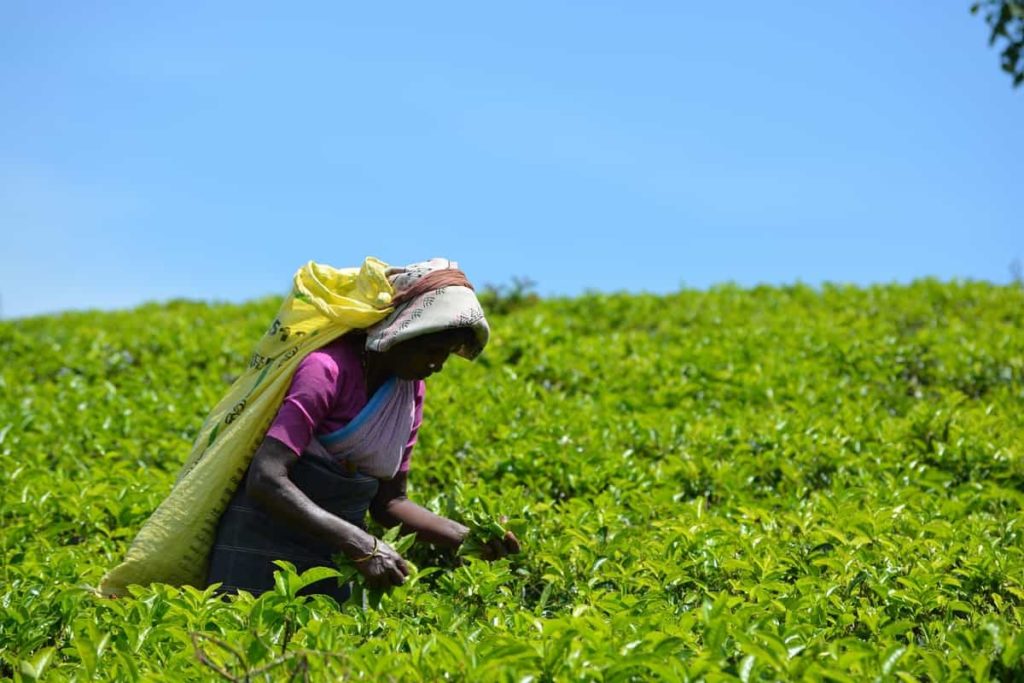
Choose a healthy Tea plant from the garden’s center with no signs of pests or diseases. Use a broadcast sprayer to apply the fertilizer to the soil evenly. When you spray, move the material back and forth.
Fertilizer application
Fertilize Tea plants every two months when they grow actively in spring and summer. In the first year, apply a mixture of 1/2 pound full, slow-release fertilizer. Then, add 1/ 1/2 to each application next year. Spray the fertilizer around the plant base, about six inches from the stem, and water well after each use.
Method of application
- Spread the fertilizer mixture evenly over the Tea-covered area.
- Be careful not to apply fertilizer on bush collars and leaves.
- Note that fertilizer is not applied in lumps in the collar area, hurting the roots.
- Use plastic buckets of suitable size, preferably to carry fertilizers inside the section.
Deficiency symptoms in Tea
- Nitrogen – Yellowing of tiny leaves. The leaves are rough, hard, and reduced in size.
- Potassium – Due to chlorosis and necrosis occurring, scorching on the tip of mature Tea leaves and spreads along the edges. Dominant purple / brown color and leaf size reduction are common symptoms.
- Calcium – After curling downwards, small spots appear on the lower surface of young leaves.
- Magnesium – Essential symptoms include the yellowing of mature leaves, intervening chlorosis, and premature leaf fall.
- Sulfur – Special symptoms are ‘net veining’ in small leaves where the leaf blade takes on a striking yellow color, and the veins are mainly dark green towards the best branches below.
- Zinc – Plants show short internodes, chlorotic and small sickle-shaped leaves, and blocked auxiliary shoots.
In case you miss this: Cultivation Of Asian Pigeonwings, (Clitoria Ternatea)
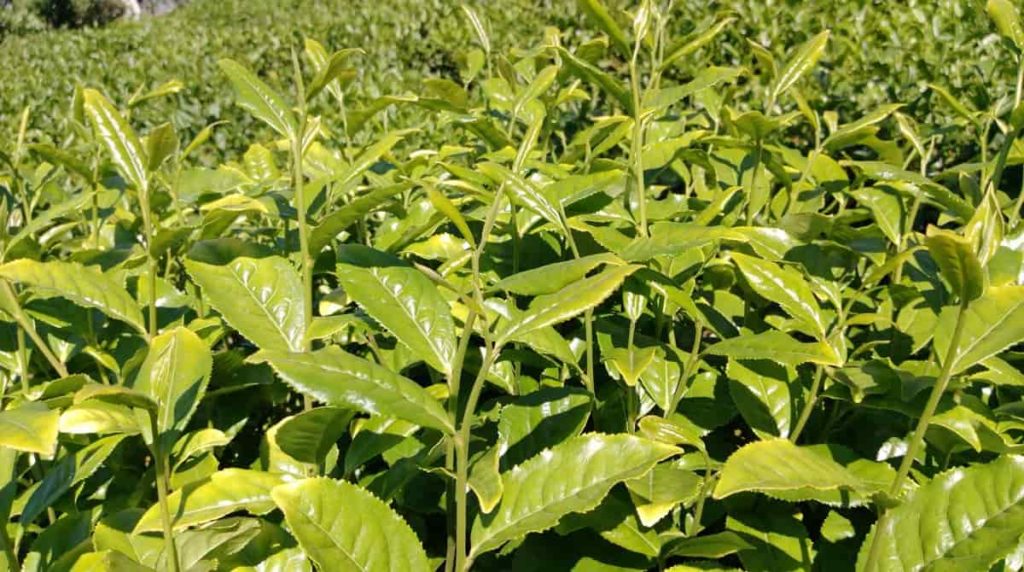
Micronutrients
In micronutrients, zinc deficiency is most often seen in young shoots characterized by reduced leaf size, pink, chlorosis, and more banji shoots. Therefore, it is generally recommended to use Zinc Sulphate @ 6 to 8 kg/ha for high-yielding fields each year. The above amount can be given in 4 to 5 divided applications. At the same time, other micronutrients such as manganese sulfate @ 15.5 g / 10 liter and boric acid by 5.5 g / 10 liters with spray volume are beneficial for zinc sulfate spray has been found.
Essential nutrients
Nitrogen – It is used to prepare protoplasm, protein, and chlorophyll. Large quantities are required, and the application level should be approximately the same as potassium applications. If the deficiency of the plants turns yellow and the growth stops, the symptoms first appear in the old leaves because the nitrogen in the plant is very active. Therefore, deforestation of native plants in the forest is generally rare.
Phosphorus – It promotes strong root growth. Phosphate fertilizers are often recommended for the early development of many crops, for example, superphosphate 300 kg per hectare. However, it does not move quickly in the soil and can adapt to soils (especially in acidic and red volcanic soils), making it unavailable to plants. Therefore, when using phosphorus fertilizer, it is recommended to add it to the soil (i.e., before planting) and band instead of spreading.
In case you miss this: Tea Farming Project Report, Cost, Profits Details
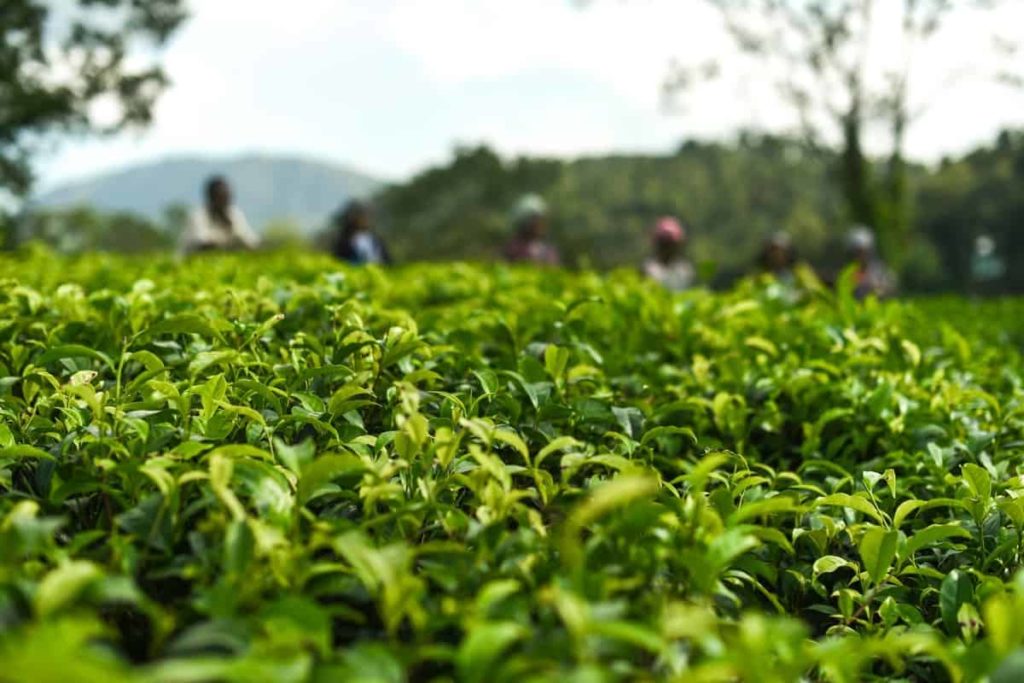
Potassium is included in photosynthesis and is required by plants in large quantities. It is often deficient in areas with high rainfall, sandy soils, and where vegetation is heavily harvested. If it is defective, it causes marginal necrosis of the leaves. The soil in this region is generally deficient in potassium. Tea requires more than moderate amounts of potassium, and large parts of the leaf are removed, thus depleting soil reserves. The increasing rate of potassium used in the cut year encourages the formation of healthy farmers. Muriate of potash is a source of potassium used in Tea plantations.
Copper – It is involved in the formation of chloroplasts and proteins. It is deficient in high pH and sandy loam soils. When defective, it causes deformed and stunted growth and often leaves cupping. Copper sulfate 10-20 kg/ha or copper chelate (1%) is treated with foliar spray. The quantity required for Tea is relatively low, and a reduction in the effect on crop yields has been found rarely.
Sulfur – Sulfur is involved in forming proteins and chlorophyll and is essential for photosynthesis. It can be deficient with waterlogging because sulfur precipitates out with Iron or Manganese. Sulfur deficiency is well documented in many Tea-growing areas. The sulfur content in Tea twigs is between 0.08 and 0.30%, depending on the dry matter and limiting Tea’s productivity.
Its deficiency has been described as “Tea Yellows,” which is “net veining” in small leaves where the leaf blades take on a striking yellow color, and the veins are deep until the best-branched standout below. After that, they are green in color. However, the annual use of 20% nitrogen in the form of ammonium sulfate will take care of the Tea plant’s sulfur needs.
Calcium and Magnesium -The use of dolomite lime once or twice in a cycle is a regular cultural process to correct soil pH, which takes care of Ca and Mg nutrition. However, due to the antagonistic nature of Mg with K, the fields provided with more K limit the availability of Mg. To overcome this hostility, plants are recommended to use 1.0% magnesium sulfate.
Four to five rounds of foliar spray effectively provided 8-10 kg of magnesium sulfate. Because Mg2 + is a mobile ion in the plant system, depletion always begins in older leaves. Yellowing of mature leaves, chlorosis in the veins, and premature leaf fall are typical symptoms of Mg deficiency in Tea.
In case you miss this: Tea Farming Information Detailed Guide
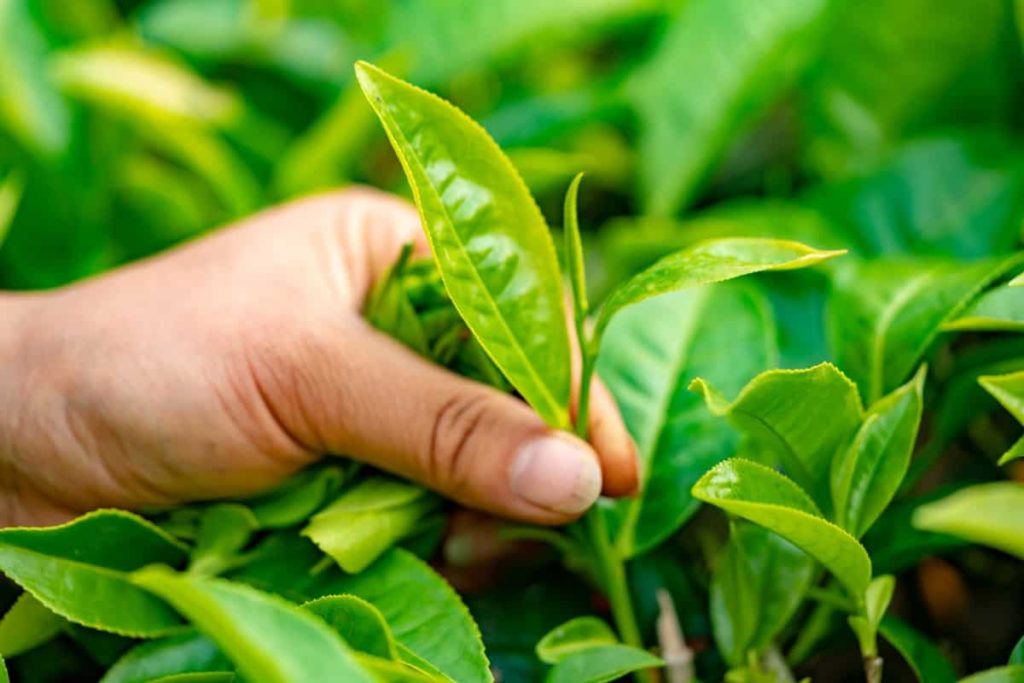
Manganese – Manganese is used to form sugar and chlorophyll and the activity of enzymes. It is essential for the absorption of phosphorus and potassium by plants. Its deficiency is rare and only at such a high pH. The young leaves are the first to shrink. Manganese sulfate is used to treat deficiency (50 kg/ha). Manganese is absorbed in large quantities through Tea, and the plant can tolerate large amounts. The use of phosphate can stimulate the part of manganese.
In Tea trees, it has been observed that when one of the micronutrients is deficient (e.g., Fe, Zn, Cu), some micronutrients (e.g., N&K) will be significantly increased the reduced growth rates of the trees. After harvest, the deficiency of micronutrients is seen when they grow fast, and the root system is reduced due to pruning. By one to two months, the trees will have difficulty accessing enough nutrients, especially if they are inactive to meet their needs. In these cases, foliar fertilizers will be helpful.
- Economical Aquaculture: A Guide to Low-Budget Fish Farming
- 15 Common Planting Errors That Can Doom Your Fruit Trees
- How to Make Houseplants Bushy: Effective Tips and Ideas
- Innovative Strategies for Boosting Coconut Pollination and Yield
- Pollination Strategies for Maximum Pumpkin Yield
- The Complete Guide to Chicken Fattening: Strategies for Maximum Growth
- Natural Solutions for Tulip Problems: 100% Effective Remedies for Leaf and Bulb-Related Issues
- Revolutionizing Citrus Preservation: Towards a Healthier, Greener Future
- Natural Solutions for Peony Leaf and Flower Problems: 100% Effective Remedies
- Maximizing Profits with Avocado Contract Farming in India: A Comprehensive Guide
- Natural Solutions for Hydrangea Problems: 100% Effective Remedies for Leaf and Flowers
- The Ultimate Guide to Choosing the Perfect Foliage Friend: Bringing Life Indoors
- From Sunlight to Sustainability: 15 Ways to Use Solar Technology in Agriculture
- The Ultimate Guide to Dong Tao Chicken: Exploring from History to Raising
- The Eco-Friendly Makeover: How to Convert Your Unused Swimming Pool into a Fish Pond
- Mastering the Art of Delaware Chicken Farming: Essentials for Healthy Backyard Flocks
- 20 Best Homemade Fertilizers for Money Plant: DIY Recipes and Application Methods
- How to Craft a Comprehensive Free-Range Chicken Farming Business Plan
- Brighten Your Flock: Raising Easter Egger Chickens for Beauty and Bounty
- How to Optimize Your Poultry Egg Farm Business Plan with These Strategies
- Subsidy for Spirulina Cultivation: How Indian Government Schemes Encouraging Spirulina Farmers
- Ultimate Guide to Raising Dominique Chickens: Breeding, Feeding, Egg-Production, and Care
- Mastering the Art of Raising Jersey Giant Chickens: Care, Feeding, and More
- Ultimate Guide to Raising Legbar Chickens: Breeding, Farming Practices, Diet, Egg-Production
- How to Raise Welsummer Chickens: A Comprehensive Guide for Beginners
- How to Protect Indoor Plants in Winter: A Comprehensive Guide
- Ultimate Guide to Grow Bag Gardening: Tips, Tricks, and Planting Ideas for Urban Gardeners
- Guide to Lotus Cultivation: How to Propagate, Plant, Grow, Care, Cost, and Profit
- Agriculture Drone Subsidy Scheme: Government Kisan Subsidy, License, and How to Apply Online
- Ultimate Guide to Raising Araucana Chickens: Breed Profile, Farming Economics, Diet, and Care
- Bringing Hydroponics to Classroom: Importance, Benefits of Learning for School Students
- Ultimate Guide to Raising Polish Chickens: Breed Profile, Farming Economics, Diet, and Care
- Ultimate Guide to Raising Australorp Chickens: Profile, Farming Economics, Egg Production, Diet, and Care
- Silkie Chicken Farming: Raising Practices, Varieties, Egg Production, Diet, and Care
- Sussex Chicken Farming: Raising Practices, Varieties, Egg Production, Diet and Care
- Homemade Feed Formulations for Livestock: Discover Cost-effective Starter to Finisher Feed Recipes
Very useful information on tea growing